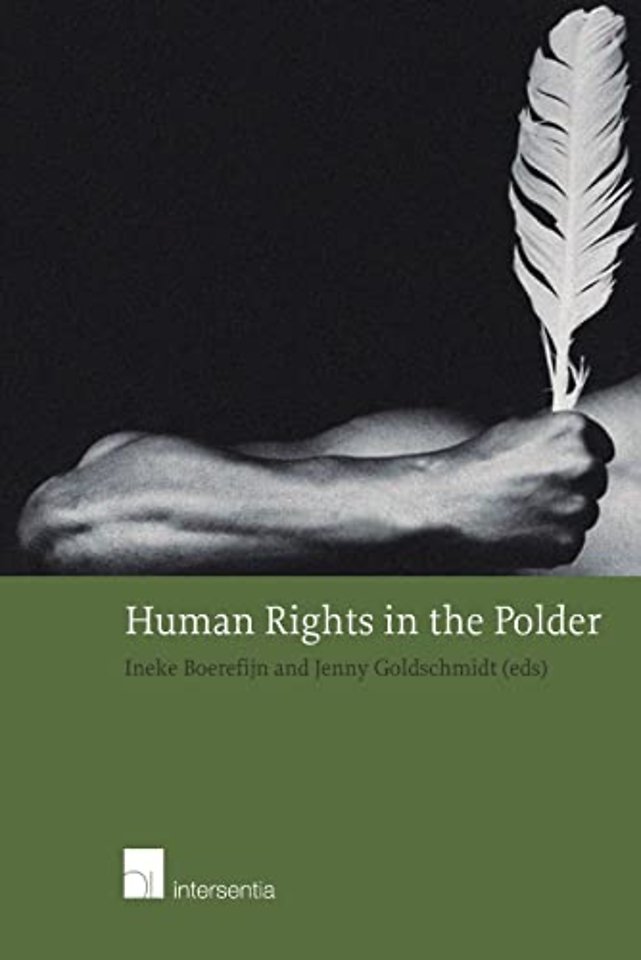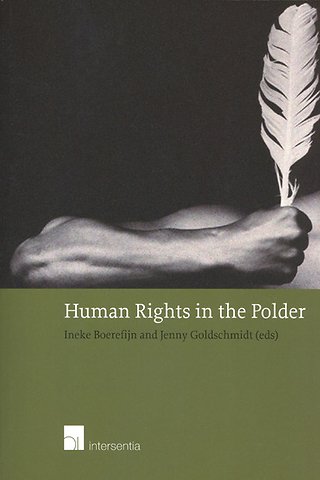



Ineke Boerefijn is werkzaam bij het Studie- en informatiecentrum mensenrechten van de Universiteit Utrecht.
Meer over de auteursHuman Rights in the Polder
Human Rights and Security in the Public and Private Sphere
Samenvatting
Wat is er gebeurd in dit kleine land dat bekend stond om zijn tolerantie en vermogen te polderen? Discussies in de media en in de politiek suggereren dat het gevoel van onveiligheid in de Nederlandse maatschappij toeneemt. Zijn de mensenrechten minder beschermd in de 21e eeuw?
Dit boek is uitgegeven naar aanleiding van het congres 'Human rights in the polder. Human rights and human security in the public and private sphere', georganiseerd door het Studie- en informatiecentrum mensenrechten van de Universiteit Utrecht. De auteurs zijn met dit thema aan de slag gegaan en komen met een aantal min of meer typische Nederlandse kwesties en bespreken deze vanuit een internationale invalshoek met betrekking tot de mensenrechten.
Het centrale thema van mensenrechten en veiligheid wordt besproken met speciale aandacht voor de private sfeer, de publieke sfeer en de nakoming van mensenrechten.
Specificaties
Inhoudsopgave
Preface
(Marten Oosting)
Human Rights in the Polder
(Ineke Boerefijn and Jenny Goldschmidt)
1. Introduction
2. Human Rights in a Changing World: The Quest for Security – A Human Rights Lawyer's View
2.1. How Safe is Private?
2.2. Security in a Pluralist Society
2.3. Guaranteeing Security and Freedom
3. Human Rights and Security in the Private Sphere
4. Human Rights and Security in the Public Sphere
5. Implementation of Human Rights
5.1. An Agenda for SIM's 50th Anniversary
6. Final Observations
How Safe is Private?
(Ybo Buruma)
1. Introduction: Human Rights in Iran, Congo and the Dutch Polder
2. What is Private?
3. Regulating Actions: Substantive Law
4. You're being Watched: Procedural Powers
5. Analysing Risk: The Immutable Me
6. How Safe is Private? Safety in a Society in Transition
Human Security and Multiculturalism in Canada
(Rhoda E. Howard-Hassmann (with Laura Reidel))
1. Introduction
2. Minorities and Human Security
3. Recent Canadian Debates about Islam and Human Rights
3.1. Prayer Space in Quebec Universities
3.2. Shari'a-Based Arbitration in Ontario
3.3. The Danish Cartoon Controversy
3.4. Gay Marriages
4. Liberal Democracy and Religious Minorities
5. Multiculturalism and Muslim Canadians
6. But What About Terrorism?
Acknowledgements
Bibliography
Human Rights and Security: A False Dichotomy
(Elizabeth Odio Benito)
1. Introduction
2. Main Achievements in the Development and Evolution of International Human Rights Law
2.1. Affirmation and Protection of Human Rights
2.2. International Humanitarian Law
2.3. International Criminal Law
3. Obstacles Towards a Full Enjoyment of Universal Human Rights
3.1. Lack of Political Will
3.2. Human Catastrophes
4. Some Current Challenges
4.1. The False Dichotomy of Security v. the Rule of Law
4.2. Effective Protection of Individuals in Humanitarian Crisis
4.3. International Criminal Justice
5. Final Remarks
PART A: HUMAN RIGHTS AND SECURITY IN THE PRIVATE SPHERE
Autonomy: A Warrant for or Threat to Good (Care for) Health?
(Aart Hendriks)
1. Introduction
2. Human Dignity
3. Autonomy
3.1. Autonomy and Incompetence
3.2. Autonomy and Competence
4. Protecting Health, Safety and Life
5. Conclusions
Human Rights and their Safeguards in the Private Sphere
(Alex Geert Castermans)
1. Introduction
2. Freedom from Discrimination in the Private Sphere
3. Security for the Person Discriminated Against
3.1. Security
3.2. Specifi c Rules to Prevent and Combat Discrimination
3.3. Periodic Assessment
4. Security for the Responsible Party
4.1. Security and Safety
4.2. Direct Discrimination
4.3. Indirect Discrimination
4.4. Periodic Assessment
5. Concluding
PART B: HUMAN RIGHTS AND SECURITY IN THE PUBLIC SPHERE
Freedom from Fear of Islam? An Argument for a Generous Approach to Religious Pluralism
(Titia Loenen)
1. Introduction
2. Assimilation Versus Pluralism
3. Human Rights Issues at Stake
3.1. Religious Freedom and Equality
3.2. Limits to Religious Pluralism
4. Space Left for Religious Pluralism? The Headscarf Case
4.1. The Headscarf in Public Education: Two ECHR Cases
4.2. The Headscarf as a Symbol of Women's Oppression
4.3. The Headscarf as a Th reat to State Neutrality
4.4. The headscarf as a Threat to Public Order
5. Conclusions
Conflicts of Rights and Today's Dilemmas in Combating Terrorism
(Jit Peters and Lotte van der Laan)
1. Introduction
2. Is Security to be Considered as a Human Right?
3. The Right not to be Tortured
4. Freedom of Thought and Freedom of Expression
5. Trends and Threats in Legislation Combating Terrorism
5.1. Secret Information
5.2. Role of the Judiciary
5.3. Control Orders
5.4. Evidence
5.5. Harassment by Authorities
5.6. Minority Groups
5.7. Additional Powers
6. Criteria for Legislation
6.1. Effectiveness
6.2. Careful Consideration
6.3. Sunset Clauses
6.4. Evaluation and Accountability
6.5. Non-discrimination
6.6. Role of the Judiciary
7. Conclusions
PART C: IMPLEMENTATION OF HUMAN RIGHTS
Foreign Policy Actors and Human Rights
(Peter R. Baehr)
1. Introduction
2. Human Rights in Foreign Policy
3. Dilemmas of Foreign Policy
3.1. Introduction
3.2. Peace and Security
3.3. Economic Relations
3.4. Development Cooperation
4. Non-Governmental Organisations
5. Multinational Corporations
6. Other Non-State Actors
7. Conclusions
The Role of National Institutions in Implementing Human Rights: The Dutch Experience
(Roel Fernhout)
1. Introduction
2. National Developments
3. International Developments
4. Bottlenecks and Gaps
5. Foreign Experiences
6. Discussion Points
7. Tasks
8. National Institute and Ombudsman
9. How to Proceed?
An Agenda for SIM's 50th Anniversary
(Cees Flinterman)
1. Introduction
2. Universal Declaration
3. Research Activities
4. Peace, Security and Human Rights
5. Indivisibility of Human Rights
6. New Threats and Challenges
7. National Institute of Human Rights
8. Inclusivity of Human Rights
9. Foreign Policy and Human Rights
10. Final Observations
Notes on Contributors
Anderen die dit boek kochten, kochten ook
Net verschenen
Rubrieken
- aanbestedingsrecht
- aansprakelijkheids- en verzekeringsrecht
- accountancy
- algemeen juridisch
- arbeidsrecht
- bank- en effectenrecht
- bestuursrecht
- bouwrecht
- burgerlijk recht en procesrecht
- europees-internationaal recht
- fiscaal recht
- gezondheidsrecht
- insolventierecht
- intellectuele eigendom en ict-recht
- management
- mens en maatschappij
- milieu- en omgevingsrecht
- notarieel recht
- ondernemingsrecht
- pensioenrecht
- personen- en familierecht
- sociale zekerheidsrecht
- staatsrecht
- strafrecht en criminologie
- vastgoed- en huurrecht
- vreemdelingenrecht





